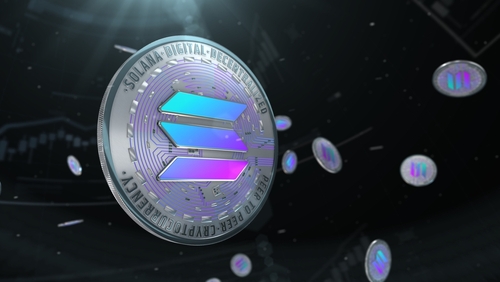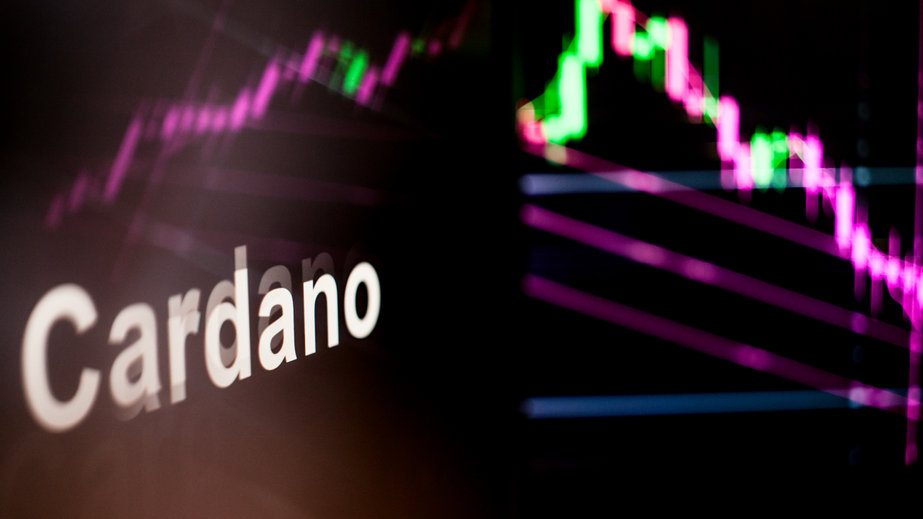
Die Kryptobranche sieht in dem geplanten PoW-Mining-Verbot von New York bloße „Performance-Politik“, die für das Finanzmekka der Welt zum ungewollten Bumerang werden könnte.

Finanzmittel Info + Krypto + Geld + Gold
Krypto minen, NFT minten, Gold schürfen und Geld drucken

Die Kryptobranche sieht in dem geplanten PoW-Mining-Verbot von New York bloße „Performance-Politik“, die für das Finanzmekka der Welt zum ungewollten Bumerang werden könnte.

The temporary disabling of the durable nonce transactions allowed for block production to resume after last Wednesday’s network four and half hour outage.
Solana has disabled the durable nonce transaction feature on its network to prevent future outages similar to what happened last week when it halted for over four hours.
According to Solana Labs, a runtime bug triggered a situation where failed durable nonce transactions were processed twice, leading to nondeterminism. In this case, validators counted the transaction at two different block heights, with 33% of the validators reportedly accepting the subsequent block to effectively halt the network.
The durable nonce transactions feature was disabled in the v1.9.28/v1.10.23 releases as part of the restart after the 1 June block production halt on the Mainnet Beta.
This, according to the team, will help ensure the network does not suffer a similar stall in consensus if in case of a bug.
“Durable nonce transactions will not process until the mitigation has been applied, and the feature re-activated in a forthcoming release,” the platform wrote in a blog post.
Solana is currently the ninth largest cryptocurrency platform with a market cap of over $14.5 billion. The native SOL coin trades around $42.55, more than 6% up in the past 24 hours.
The post Solana disables transaction feature to prevent future network outage appeared first on CoinJournal.

Nachdem die Zentralbank des Landes eigentlich eine sehr ablehnende Haltung zu Krypto eingenommen hat, will diese zumindest schon mal ihre regulatorische Sandkiste für die neue Anlageklasse öffnen.

USSD is the first over-collateralized decentralized stablecoin, with guaranteed minimum collateral ratio of 130%.
The current collateral ratio is over 200% with nearly $1.4 billion worth of assets in the Tron DAO reserve account.
TRON-based decentralized stablecoin USDD has hit another milestone as it becomes the first overcollateralized decentralized stablecoin (OCDS) in the crypto industry.
A month since its launch on 5 May, USDD has experienced great organic growth as part of its Stablecoin 3.0 development, and this latest upgrade brings to users not only fast transactions, but also the highest collateral ratio within the market.
This follows an upgrade that allows TRON DAO Reserve members to both mint USDD by burning TRX as well as consolidate the stablecoin’s stability and credibility via a mechanism that makes it possible to over-collateralize assets in the TRON DAO Reserve (TDR).
Over-collateralized assets include Bitcoin (BTC), Tron (TRX), and top stablecoins such as Tether (USDT), USD Coin (USDC), TrueUSD (TUSD) and USDJ.
According to data on the Tron blockchain explorer TRONSCAN, USDD’s total circulating supply currently is just above 667 million. The guaranteed minimum collateral ratio for the tokens is at least 130%, putting it above the 120% for the DAI.
The 130% minimum ratio means that every USDD token is backed by $1.3 worth of the above assets. Currently, the ratio is at over 200%, with more than $1.37 billion worth of different assets backing the USDD.
The reserve account holds 10,500 BTC, 240 million USDT, and 1.9 billion TRX. Other than that, a total of 8.29 billion TRX have been sent to the burning contract.
The public can access the real-time collateral ratio for the stablecoin 24/7 on the TRON DAO Reserve’s website.
USDD is quickly gaining ground as the leading decentralized stablecoin, with circulation on the TRON network, Ethereum, and BNB Chain. The stablecoin is also used across several platforms including exchanges Poloniex, KuCoin, Huobi Global and Bybit.
It’s also available on SUN.io, PancakeSwap, Uniswap, and Curve among decentralized finance (DeFi) platforms.
However, the market’s confidence in algorithmic stablecoins wavered following the dramatic collapse of TerraUSD (USD). The stablecoin, which was backed by over 80,000 BTC among other assets, tanked and crashed the LUNA price along with it.
But TRON founder Justin Sun says USDD is designed to be better than UST and that it is “spearheading the Stablecoin 3.0 era.” According to him, the upgrade adds features that underpin the stablecoin’s stability.
He added”
“The $10 billion reserves pledged by the TDR will enable USDD to become the most reliable decentralized stablecoin with the highest collateral ratio in blockchain history. Currently, the 200%+ collateral ratio offers USDD a very strong safety net.”
The post TRON upgrades USDD in the aftermath of TerraUSD collapse appeared first on CoinJournal.

The cryptocurrency market is having an excellent start to the week, with most of the cryptocurrencies currently in the green zone.
The broader crypto market is trading in the green zone. The total cryptocurrency market cap is up by more than 5% today and currently stands close to $1.3 trillion.
Bitcoin remains the market leader, up by more than 6% over the past 24 hours. At press time, BTC is trading above the $31,500 resistance level.
Ether is also performing well, up by 7% so far today and currently trading above $1,900.
ADA, the native token of the Cardano ecosystem, is the best performer amongst the top 10 cryptocurrencies by market cap. ADA is up by more than 11% so far today and currently trades above $0.62 per coin.
Cardano has been performing well ahead of the network’s Vasil Hard Fork. The upgrade is expected to take place on June 29 and many expect it to massively improve the network’s scalability and performance.
The ADA/USD 4-hour chart is currently bullish as the cryptocurrency has been performing well today. The technical indicators show that ADA has been performing well in the last 24 hours.
The MACD line crossed into the positive zone over the weekend as ADA performed excellently. The 14-day relative strength index of 71 shows that ADA could soon enter the overbought region.
If the rally continues, ADA could surge past the first major resistance level at $0.668 before the end of the day. However, it would need the support of the broader market to trade above $0.720 for the first time this month.
On the flip side, ADA could drop below its 50-day EMA of $0.5605 if the bears regain control of the market.
The post Why is Cardano up by 11% in the last 24 hours? appeared first on CoinJournal.